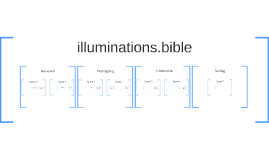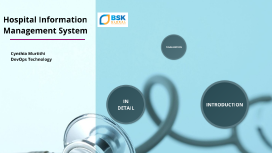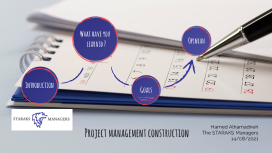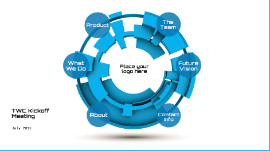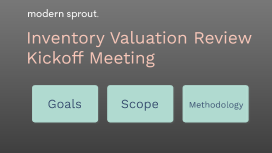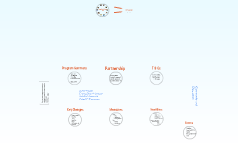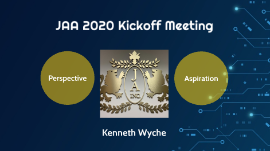Kickoff Meeting
Transcript: Inventory Valuation Review Kickoff Meeting Goals Goals As the name suggests, this main goal of this review is to establish and maintain accurate inventory valuations. Inventory Valuation has two primary factors: Quantity and Cost. We made some effort to ensure we have accurate quantities in DEAR, however the cost associated with those quantities is not reliable, and in some cases is missing. We will also use this as an opportunity to review related procedures and identify process improvements. Accounting Accounting Improvements Balance Sheet accounts will contain accurate values. 1131 Raw Material Raw Material will be "Landed Cost" meaning freight charges will be allocated individual units. 1132 Work in Progress (WIP) 1133 Finished Goods Cost of Goods Sold (COGS) accounts will contain accurate and insightful info. 6100 COGS (actual cost of units sold) 6120 Direct Labor Allocation 6130 Overhead Allocation 6150 Inventory Adjustments Currently we create a monthly accounting adjustment that corrects (the best it can) the above accounts. This will no longer be necessary. Actual Cost vs. Fixed Cost Actual Cost • Actual cost is the only cost that is actually used for accounting. • The main purpose of accounting is to accurately reflect reality. Inventory is valued at actual cost. This flows through to our COGS and margins. o The cost can vary with every purchase. For many companies, the cost does vary with every purchase. DEAR is designed to handle this behind the scenes using FIFO. • The actual cost can be recorded/assigned in two ways 1 - The invoice cost is matched to received goods 2 - In a stock adjustment if the starting qty is 0, a cost must be assigned. • Average Cost: Average cost is the weighted average of cost using the stock on hand at each cost. It’s a useful snapshot for items with variable costs. Fixed Costs • Fixed costs are used primarily as a planning tool o Actual cost is used for everything historical/backwards looking. Fixed cost can be used in forward looking tools. • In DEAR, fixed cost is only used to pre-populate POs. o We can set the default to use fixed or last purchase price. o The cost listed on a PO is not used to value inventory or any other accounting record. It’s used to communicate our expectations with the vendor. • Outside of DEAR, fixed cost can be used for estimating margins or total purchases for a year, or other planning items. Reporting Reporting Improvements All reports generated in DEAR will be reliable and useful. This includes: Quantity Reports Cost Reports COGS/Margin Reports/Profit by Customer Etc. Using actual costs instead of fixed costs, meaning we can analyze actual margins instead of projected. The overall power of our ERM database will increase significantly. Best Practices Best Practices We will use this opportunity to review many of our procedures and workflows. Improve accuracy Improve efficiency Reduce work-arounds Document SOPs Our collective team now has significant experience using DEAR and can contribute to the re-evaluation of process and procedures. Effectiveness vs. Efficiency A note on effective vs efficient Effectiveness and efficiency are two different and independent items. Effective refers to the accuracy of a tasks; meeting the core objective. Efficiency refers to the amount of resources, mainly time, it takes to complete a task. Efficiency can never come at the cost of effectiveness. Scope Scope DEAR is the backbone of our operations, with a large number of users generating a large number of daily transactions. This will be a large project. The scope will include all activity in DEAR that has an impact on inventory valuation, which is most of the activity in DEAR. Inventory valuation can't be corrected mid-stream, so we'll be starting at POs and reviewing through product returns. Phase 1 Components Phase 1: Components This will include reviewing POs, receiving, invoicing and similar items, with extra attention given to: Bulk purchases/UoM changes Labs/Subs Multi-vendor, copacking, etc Add ons Tooling, setup, dies, "Mering margin" Uline/Amazon/Credit Card Purchases Landed Cost Matching receipts and invoices When phase 1 is complete we can be confident we have accurate raw material inventory valuation. Phase 2 Assembly Phase 2: Assembly The "Assembly" phase will focus on all transactions used to create finished goods. Assembly orders Scrap (can choose to include in cost of FG) Overhead and labor allocations Warehouse movements, staging and restocking Cycle counting and other adjustments The main goals of this phase will be: Maintaining accurate raw material values through the assembly process. Creating accurate finished goods values. Overhead and Labor allocations will be a primary focus. Phase 3 Sales Phase 3: Sales I've labeled this phase "sales", but really it's anything that reduces or changes finished goods value after assembly. This includes: Sales Returns Credit Memos Some CMs don't effect our inventory, but do have an similar impact on our






